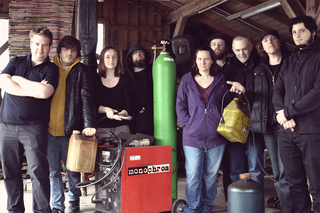Anal sex or anal intercourse is generally the insertion and thrusting of the erect penis into a person's anus, or anus and rectum, for sexual pleasure. Other forms of anal sex include anal fingering, the use of sex toys, anilingus, pegging, as well as electrostimulation and erotic torture such as figging. Although anal sex most commonly means penile–anal penetration, sources sometimes use anal intercourse to exclusively denote penile–anal penetration, and anal sex to denote any form of anal sexual activity, especially between pairings as opposed to anal masturbation.

Human sexual activity, human sexual practice or human sexual behaviour is the manner in which humans experience and express their sexuality. People engage in a variety of sexual acts, ranging from activities done alone to acts with another person in varying patterns of frequency, for a wide variety of reasons. Sexual activity usually results in sexual arousal and physiological changes in the aroused person, some of which are pronounced while others are more subtle. Sexual activity may also include conduct and activities which are intended to arouse the sexual interest of another or enhance the sex life of another, such as strategies to find or attract partners, or personal interactions between individuals. Sexual activity may follow sexual arousal.

A paraphilia is an experience of recurring or intense sexual arousal to atypical objects, places, situations, fantasies, behaviors, or individuals. It has also been defined as a sexual interest in anything other than a consenting human partner. Paraphilias are contrasted with normophilic ("normal") sexual interests, though the definition of what makes a sexual interest normal or atypical remains controversial.

Sexual intercourse is sexual activity involving the insertion and thrusting of the male penis inside the female vagina for sexual pleasure, reproduction, or both. This is also known as vaginal intercourse or vaginal sex. Other forms of penetrative sexual intercourse include anal sex, oral sex, fingering and penetration by use of a dildo, and vibrators. These activities involve physical intimacy between two or more people and are usually used among humans solely for physical or emotional pleasure and can contribute to human bonding.

Sexuality and gender identity-based cultures are subcultures and communities composed of people who have shared experiences, backgrounds, or interests due to common sexual or gender identities. Among the first to argue that members of sexual minorities can also constitute cultural minorities were Adolf Brand, Magnus Hirschfeld, and Leontine Sagan in Germany. These pioneers were later followed by the Mattachine Society and the Daughters of Bilitis in the United States.

Sexual fetishism or erotic fetishism is a sexual fixation on a nonliving object or nongenital body part. The object of interest is called the fetish; the person who has a fetish for that object is a fetishist. A sexual fetish may be regarded as a non-pathological aid to sexual excitement, or as a mental disorder if it causes significant psychosocial distress for the person or has detrimental effects on important areas of their life. Sexual arousal from a particular body part can be further classified as partialism.

Monochrom is an international art-technology-philosophy group, publishing house and film production company. It was founded in 1993, and defines itself as "an unpeculiar mixture of proto-aesthetic fringe work, pop attitude, subcultural science and political activism". Its main office is located at Museumsquartier/Vienna.

Johannes Grenzfurthner is an Austrian artist, filmmaker, writer, actor, curator, theatre director, performer and lecturer. Grenzfurthner is the founder, conceiver and artistic director of monochrom, an international art and theory group and film production company. Most of his artworks are labeled monochrom.
Somnophilia is a paraphilia in which an individual becomes sexually aroused by someone who is unconscious. The Dictionary of Psychology categorized somnophilia within the classification of predatory paraphilias.
Acrotomophilia is a paraphilia in which an individual expresses strong sexual interest in amputees. It is a counterpart to apotemnophilia, the desire to be an amputee.
In human sexuality, kinkiness is the use of non-conventional sexual practices, concepts or fantasies. The term derives from the idea of a "bend" in one's sexual behaviour, to contrast such behaviour with "straight" or "vanilla" sexual mores and proclivities. It is thus a colloquial term for non-normative sexual behaviour. The term "kink" has been claimed by some who practice sexual fetishism as a term or synonym for their practices, indicating a range of sexual and sexualistic practices from playful to sexual objectification and certain paraphilias. In the 21st century the term "kink", along with expressions like BDSM, leather and fetish, has become more commonly used than the term paraphilia. Some universities also feature student organizations focused on kinks, within the context of wider LGBTQ concerns.
Paraphilic infantilism, also known as autonepiophilia and adult baby, is a sexual fetish or non-sexual fetish that may involve role-playing a regression to an infant-like state. Paraphilic infantilism is a form of ageplay. People who practice paraphilic infantilism are often colloquially referred to as "adult babies", or "ABs".
Human sexuality covers a broad range of topics, including the physiological, psychological, social, cultural, political, philosophical, ethical, moral, theological, legal and spiritual or religious aspects of sex and human sexual behavior.
Zoophilia is a paraphilia in which a person experiences a sexual fixation on non-human animals. Bestiality instead refers to cross-species sexual activity between humans and non-human animals. Because of the lack of research on the subject, it is difficult to conclude how prevalent bestiality is. Zoophilia on the other hand, was estimated in one study that to be prevalent in 2% of the population in 2021.

Armpit fetishism is a type of partialism in which a person is sexually attracted to armpits, which may lead to armpit intercourse.

Object sexuality or objectophilia is a group of paraphilias characterized by sexual or romantic attraction focused on particular inanimate objects. Individuals with this attraction may have strong feelings of love and commitment to certain items or structures of their fixation. For some, sexual or close emotional relationships with humans are incomprehensible. Some object-sexual individuals also often believe in animism, and sense reciprocation based on the belief that objects have souls, intelligence, and feelings, and are able to communicate. Questions of its legality or ethical provenance have not arisen, given that inanimate objects are inert and are not 'harmed' through this specific paraphilia. Public sexual consummation of object sexual desires may be dealt with through public nudity or anti-exhibitionism legislation.

A sex machine is a mechanical device used to simulate human sexual intercourse or other sexual activity.
Arse Elektronika is an annual conference organized by the Austrian arts and philosophy collective monochrom, focused on sex and technology. The festival presents talks, workshops, machines, presentations and films. The festival's curator is Johannes Grenzfurthner. Between 2007 and 2015, the event was held in San Francisco, but is now a traveling event in different countries.
The following outline is provided as an overview of and topical guide to human sexuality:










